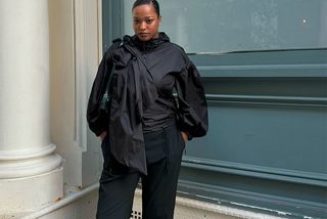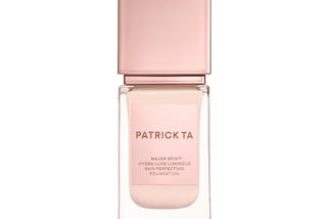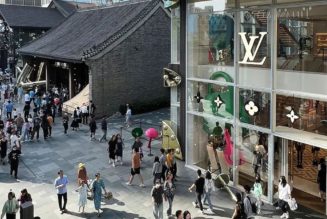As the world’s second largest luxury market, China is expected to play a crucial role in shaping the future of the industry. According to Bain & Company, China’s luxury consumption is forecasted to resume growth in 2023, and by 2030, the number of middle- and high-income consumers in the country will double.
Despite setbacks caused by the COVID-19 pandemic, China’s luxury market has continued to thrive, driven in part by young consumers who are reshaping the market with their spending power and desire for novel experiences. Luxury brands looking to get close to these consumers have started studying their aesthetic standards and seeking design inspiration from avant-garde trends such as punk and hip-hop culture. Experts suggest that the challenge for brands is to be bold in design, promotion, pricing and customer interaction strategies, while successfully replicating the exclusive, unique experience that customers seek in store in the digital space.
Taken from China digital marketing consultancy — ChoZan’s 2023 Mega Report on China’s e-commerce marketing and digital space, here are some of the most significant trends that are shaping the luxury industry in 2023 and how brands can embrace these new opportunities.
Look out for the growth and expansion of Very Important Clients (VICs)
Globally, the top 2 percent of luxury customers make up about 40 percent of luxury sales, according to Bain’s luxury goods market study. In China, the concentration of very important clients (VICs) has been on the rise and has further expanded in 2022. The economic slowdown has affected entry-level luxury consumers more than high-net-worth individuals, and the decline in mall traffic has led to fewer new customers entering luxury stores.
Consequently, sales have tilted towards VICs in 2022, with some Chinese luxury brands achieving higher concentrations of VIC sales than the global average. VICs have also played a significant role in online luxury sales, with shoppers who buy more than three times a year accounting for over 50 percent of sales and being the fastest-growing segment, according to Tmall Luxury Pavilion.
These high-net-worth individuals (HNWI) are ready to travel as the pandemic restrictions are lifted. They can be categorized into two profiles: those that shop domestic and those that shop overseas (Peihuo phenomenon). The overseas VICs travel to other countries to purchase luxury goods at the “regular” price and not the “China” price, whereas domestic VICs prefer the local experience of shopping in boutiques regardless of the item’s price.
Brands can get ahead of the overseas VICs by offering additional incentives to their products. As for domestic VICs, brands need to invest in travel retail opportunities, especially in areas like Hainan.
Expand the duty-free ecosystem
In recent years, duty-free shopping in Hainan has been a significant contributor to the growth of China’s luxury market. However, COVID-19 policies and travel restrictions impacted Hainan province in 2022, with duty-free sales declining by around 30 percent to $5 billion (35 billion RMB), well below the 100 billion RMB target.
The decline is directly linked to a reduction in traffic, with Hainan having about 35 percent fewer duty-free shoppers in 2022. To counter this, strong promotions and an International Consumer Products Expo were held in the third quarter, but they were followed by more lockdowns. Despite the lackluster results, the central government is committed to promoting Hainan and the repatriation agenda.

Luxury brands in the fashion, beauty, wine, and spirits categories showed up for the second China International Consumer Expo in Hainan in 2022. Photo: Burberry
In the meantime, the China Duty Free Group (CDFG) and its affiliates have pushed for domestic e-commerce options to offset the declines caused by limited airline travel. Duty-paid items accounted for roughly 40 percent of CDFG’s revenue during the first half of 2022. However, growth in discounted duty-paid business could devalue luxury beauty brands, making it harder for them to harmonize pricing across channels.
Kiehl’s, a global skincare luxury brand, has opened pop-ups in Sanya while employing a famous KOL for their product. Visitors could purchase their products at a discounted price or receive exclusive gift boxes from Kiehl’s. The brand also did a series of complimentary skin tests when consumers bought a certain amount of their product. Luxury names can take a page out of Kiehl’s book by also using pop-up stores in duty-free areas to attract customers. Discounts, incentives, gift boxes are also a great way to entice more customers.
Adopt global pricing strategies
Since 2020, Chinese borders have been closed, and as a result, most brands have not had to harmonize pricing between China and the rest of the world. However, similar to the pre-pandemic period, significant price gaps between China and Europe are now observed for some luxury products. Only a handful of brands have maintained their global pricing strategies over the past two years. This means that brands need to fine-tune their price gaps in China and Europe.
Leading SKUs in the leather segment show a price gap of 25-45 percent between China and Europe for products, even before accounting for value-added tax (10-12 percent). Entry-level products have more significant price gaps than expensive items; shoes have a considerable price gap of 25-35 percent, while watches and jewelry are less affected.
Most brands in the latter categories have adopted global pricing strategies for many years and continued to do so despite the closed borders. Because of these price gaps, purchasing abroad remains more reasonable for the majority of Chinese luxury consumers, and many have done so since international travel has been reinstated.
International luxury brands need to reexamine their pricing gaps and offer more competitive prices to domestic Chinese shoppers to incentivize them in buying their luxury products. This will influence where consumers travel and what luxury items they will buy.
Upgrade physical retail services
With the reopening of China’s borders and the return of travel, retail stores are now in the spotlight. Luxury brands are heavily investing in the brick-and-mortar retail experience in 2022 and 2023, with several flagship stores set to open (or reopen, like Dior’s flagship store). Consumers are going back to physical stores, and luxury brands are trying to make them more entertaining and unique by adding restaurants, artwork or experiences.
In addition, the trend of combining high-end hospitality with luxury is accelerating, with brands like Dior and Chopard adding restaurants and hotels to their stores. For 2023, luxury brands should definitely spruce up their retail services as consumers are now increasingly shopping physically in stores. One way to do it is to combine premium hospitality services such as cafes, restaurants, or skin and beauty services for consumers in retail stores.
Integrate Web3 drops into marketing strategies
According to a report by Bain and Altagamma, luxury brands will continue to explore Web3 in 2023, with “tech-enabled profit pools” such as NFTs and the metaverse expected to generate €600 billion to €1.2 trillion by 2030. Many luxury brands have already joined the digital space by releasing their own NFTs; Prada, for example, releases a new Timecapsule NFT every month alongside a limited edition physical product.

Prada Timecapsule NFT holders had the chance to receive an invitation to the Prada Menswear Fall/Winter 2023 runway show on January 15, 2023. Photo: Prada
Brands will need to focus on developing strategies to attract customers looking for a post-COVID experience. Luxury CEOs will need to advance Web3 developments to keep up with the increasing tech affinity of Chinese consumers.









